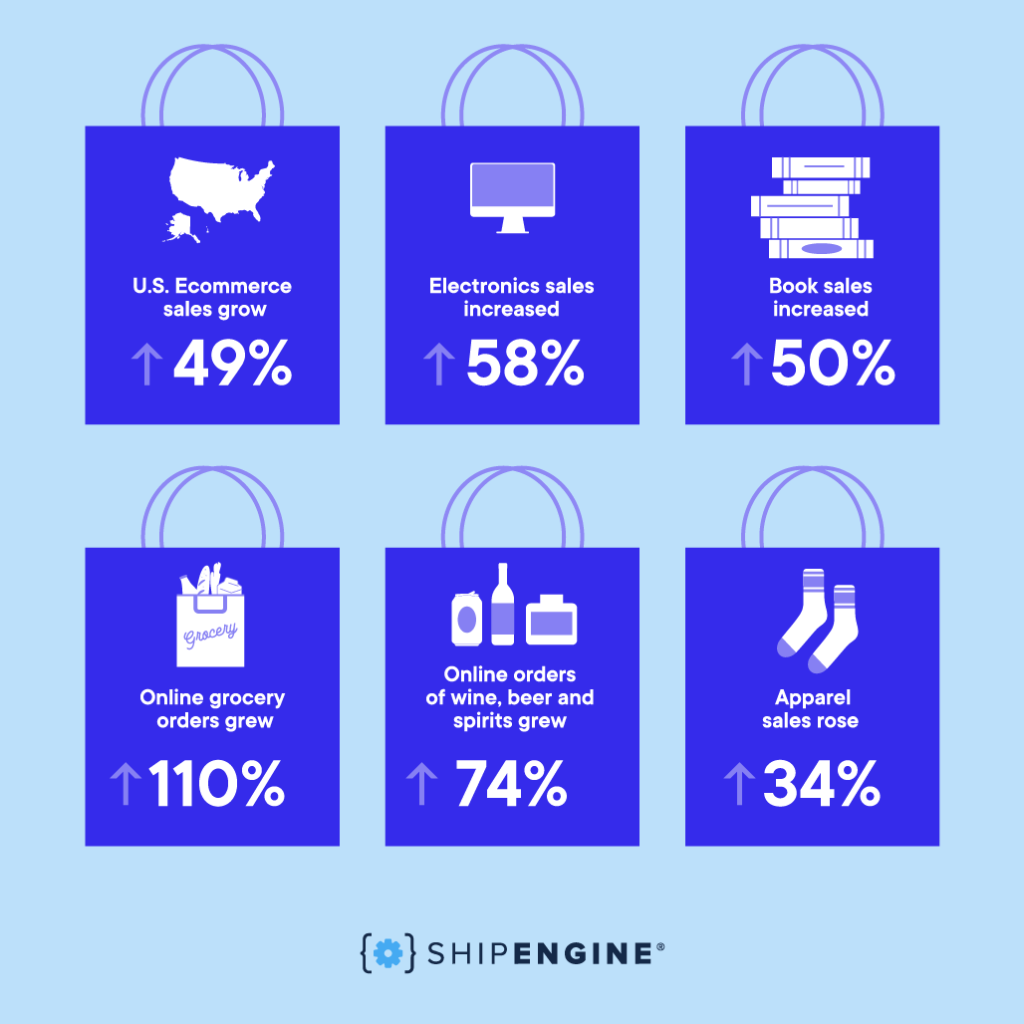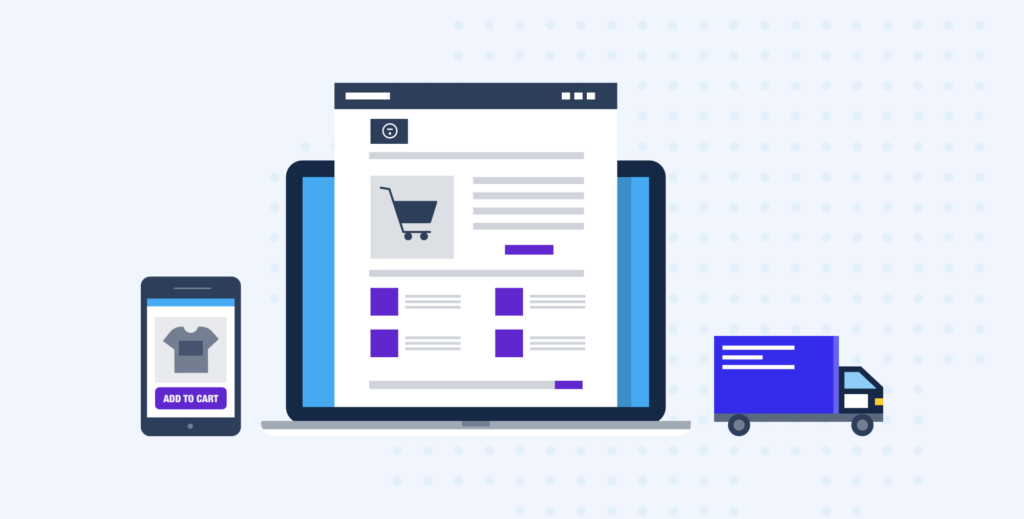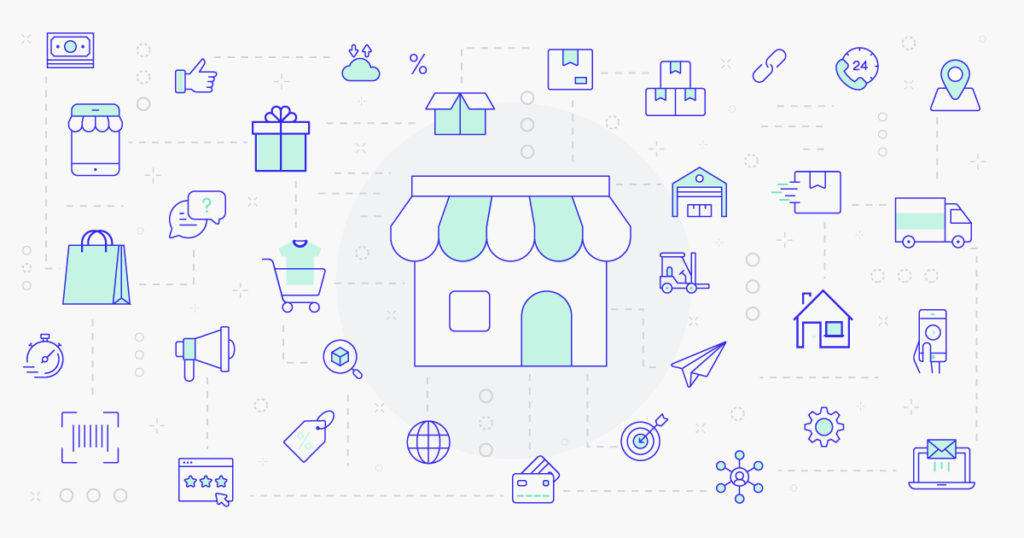Ecommerce Surges as Consumers Stay at Home During COVID-19 Outbreak

Spring 2020 will go down in history as one of the most trying times for Americans and for people around the world. The COVID-19 outbreak has forced employees to work from home and students to meet in virtual classrooms. Thankfully, modern technology has allowed work and school to continue. The term “Zoom” has become a natural part of society’s vocabulary, and users are leveraging virtual meetings to conduct business, to learn, to visit with friends, and more.
Something similar is happening with ecommerce.
Throughout the 21st century, more and more consumers have grown accustomed to shopping and ordering products online. U.S. ecommerce sales have steadily gained on in-store sales, reaching a penetration of 16% in 2019. These numbers have only skyrocketed since COVID-19 hit.
In the 8 weeks after social distancing and self-quarantine measures started, U.S. ecommerce sales jumped from 16% penetration to 27% penetration.
Let’s be clear: The COVID-19 outbreak and the resulting hospitalizations and deaths are nothing short of a tragedy. The rise in ecommerce sales during this time is the lightest of silver linings — a sign that ecommerce technology can help people live somewhat normal lives when disaster strikes.
See below to learn more about this spike in ecommerce volume, including a look at the sectors that are thriving and the ease with which new and established companies can shift online to keep their businesses alive.
U.S. Ecommerce Sales Grow 49%
The Adobe Digital Economy Index is a real-time measure of our digital economy. The Index analyzes 1 trillion-plus transactions and 100-million-plus SKUs. Its report released in April reveals that spring of 2020 experienced a Black Friday-style spike in ecommerce volume.

The latest Index report shows that:
- Daily U.S. ecommerce sales increased 49%
- Electronics sales increased 58%
- Book sales doubled
- Online grocery orders grew 110%
- Online orders of wine, beer and spirits grew 74%
- T-shirts and other apparel sales rose 34%
Within the data are nuggets of information that make perfect sense in the COVID-19 era. For example, sales of pajamas (143%), shorts (67%) and T-shirts (47%) grew, while sales of pants (-13%), jackets (-33%) and bras (-12%) fell. Also, sales of audio recording equipment like mixers, microphones, cables and windscreens grew a whopping 459% — presumably as new podcasts launched and as Zoom’s power users sought professional-grade audio equipment.
COVID-19 has also affected prices. The price of apparel has dropped 12% — its largest plunge in 5 years. But the price of electronics crept up for the first time since 2014, and the price of online groceries also jumped.
This ecommerce increase isn’t limited to the United States. France is expecting a 11.4% increase in ecommerce turnover this year, and 13 million people in Latin America made their first-ever online purchase in March.
The question for all businesses, no matter their life stage, is this: How can we effectively sell online to meet the needs of more customers?
How to Start an Ecommerce Business
At no time in world history has it been easier to start a business. That’s true of retail businesses, too. And it’s actually easier to start an ecommerce retail presence than a brick-and-mortar business that offers an in-store experience.
Once you have a product to sell, building a successful business revolves around mastering a 4-step order lifecycle:
- Customer acquisition
- Customer conversion
- Product fulfillment
- Customer retention
Tools exist to help with each step of the order lifecycle, which is great news for businesses trying to keep up with the Amazons of the ecommerce world. At ShipEngine, our shipping API helps users master one of the most challenging and complex aspects of ecommerce.
The Importance of Shipping to Ecommerce Success
How do we get products from our warehouse into the hands of our customers? That simple question represents a huge barrier for some businesses that are considering selling online. Because it’s more than one simple question — it’s actually a series of questions:
- What carriers should we use?
- Should we offer free shipping? Or ask our buyers to pay all or a portion of shipping costs?
- Are shipping discounts available?
- How will we send shipping and tracking alerts while packages are in-transit?
- Should we allow returns?
And this is only a brief sample of the many shipping-related questions that often come up during the launch of an ecommerce business. Many online sellers come to the realization that they must become experts in shipping to ultimately be successful.
But that’s not true. At ShipEngine, we offer a shipping API that shops for discounted rates, validates addresses, prints labels, and tracks shipments. With a single integration to ShipEngine, you enjoy access to 40-plus carrier integrations that you never have to build or maintain. You can even print Amazon Buy Shipping-eligible labels and shop rates with total landed costs for your international shipments.
And when you experience high volume, whether on Black Friday or during a pandemic, our technology responds with the stability and speed that you need.
At ShipEngine, we are shipping experts so that you don’t have to be. Whether you’re launching an ecommerce business or operating an existing one, ShipEngine can help you solve shipping. Get your free API key and start exploring today.


